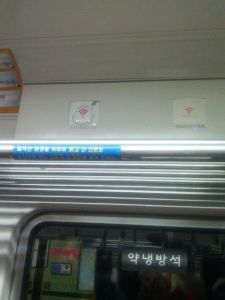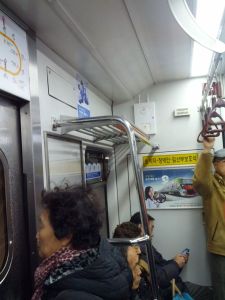I remember when I first bought my MacBook in New York about 5 years ago. I wanted to take it with me everywhere, and I did. I was hoping to search for special hidden places, Skype people overseas and show them the city in real time. In short, I thought I would stay connected. However, it is hard to stay connected when there is no free Wi-Fi connection. I remember the frustration of having to pay 5$ for accessing a hot spot. I even tried to go with the AT&T wireless connection for $70 per month. Since AT&T was involved, as you might imagine, nothing good came out of it. Companies keep developing more and more technology that requires a wireless connection, but free wireless hotspots are rather rare.
In South Korea, Wi-Fi is basically everywhere. I wouldn’t be surprised if someone told me that Samsung had something to do with it. After all, a company that is specializing in selling smartphones should be interested in their customers actually using that technology. Of course, all phones come with a data plan here, just like in the US. But it is Wi-Fi that allows people to watch US shows (e.g. “House MD,” “Person of Interest”, etc.), news and play Internet games on their cellphones during their daily subway commute. An average South Korean family will have one smart phone per person. It would be financial suicide to sign up all 3-4 smart phones for the unlimited data plan. Yet, kids and parents alike keep using their phones as portable computers and TVs. How can they afford it? Free Wi-Fi is available in a great number of places: public transportation (including the subway), public buildings, cafes, restaurants, and etc.













